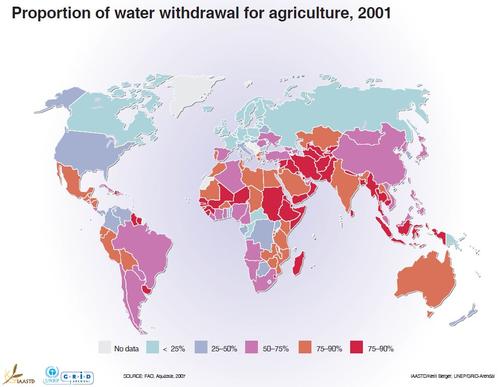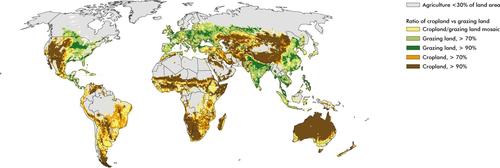Agriculture
Providing food for the growing population is a major challenge as agriculture is already the largest consumer of water withdrawn in most regions in the world, except North America and Europe. On a global basis, agriculture accounts for more than 70 % of all water withdrawals.
Unfortunately, agricultural water resources are often overused and misused, especially in irrigated agriculture. This has not only resulted in large-scale waterlogging, salinity and overexploitation of groundwater resources, but also in the depriving of downstream users of sufficient water and in the pollution of fresh water resources with contaminated return flows and deep percolation losses.
Between 30 % and 60 % of the water abstracted for agriculture is returned to rivers. In many instances this water is polluted with salts, fertilizers and pesticides and hence, is only of limited, if any, value to other sectors. Leaching of excess nutrients from farms into water sources causes eutrophication, which damages aquatic flora and fauna by producing algal blooms and depressing dissolved oxygen levels. The presence of agro-chemicals in drinking water is a recognized health hazard, requiring sophisticated and expensive treatment processes. (CAP-NET 2006)

